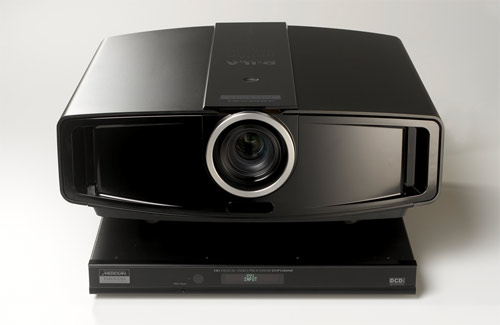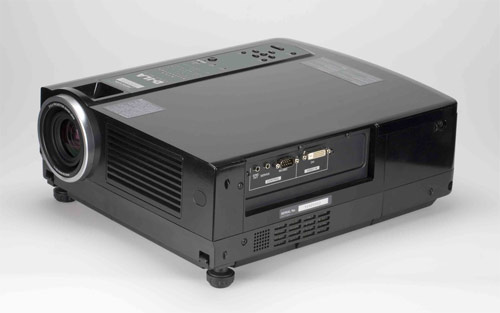Meridian and Faroudja Align to Produce High-End Home Theater Projectors
By Chris Boylan
At CEDIA Expo 2006 in Denver last week,
Meridian enlisted the video expertise of
Faroudja to showcase a new jointly created 1080p projector, based on JVC's D-ILA technology. The "Faroudja by Meridian" DILA1080MF1 (or "MF1" for short) projector is shipping now, and sells for $20,995 on its own or $25,995 with a new video processor/scaler, also announced at CEDIA.
The MF1 is built upon JVC's 3-chip D-ILA (Digital Image Light Amplifier) platform, but with heavy modifications. Each unit also undergoes a rigorous 8-hour calibration and testing process, overseen by William Phelps (video guru extraordinaire). The projector is available with your choice of short-throw or medium-throw lens.
The companion DVP1080MF processor outputs 1080p signals from virtually any video source. It incorporates Faroudja's TrueLife® 12-step detail processing and DCDi motion-adaptive de-interlacing and outputs video to the projector at 1080p resolution via an HDCP-compatible DVI-D output.

The MF1 is available with or without the companion DVP1080MF scaler (pictured below projector).
The DVP1080MF incorporates flexible aspect-ratio controls and electronic image-shift options, as well as auto-detection of high definition or standard definition input signals. It also includes an internal test-pattern generator to help tweak or verify your projector's settings.
The processor is also available stand-alone under a slightly different model number, the DVP1080HD ($6,995). The DVP1080HD includes all the facilities and features of the DVP1080MF with the addition of multiple progressive analog video outputs including RGBHV, Component, RGBS and RGsB.

The MF2 projector features most of the performance of the MF1 for about $6,000 less.
A lower cost version of the projector, the DILA1080MF2 or "MF2" for short ($14,500), was also announced at the show. The MF2 substitutes a manual zoom for the MF1's powered zoom/focus, and features a contrast ratio about 15% lower than that of the MF1, but is otherwise similar. It also features William Phelps' optimization and can be purchased with or without the MF video processor.
The on-site demo of the MF1 at CEDIA was very promising with excellent white field unifomity and grey scale reproduction, leading to a nearly three-dimensional representation of the source material. Definitely worth a look if you're in the market for a high-end projector.

